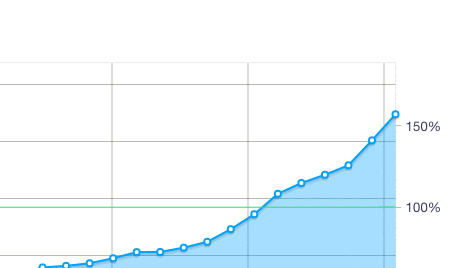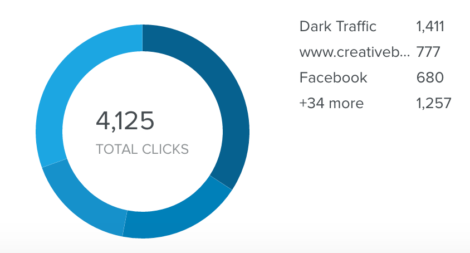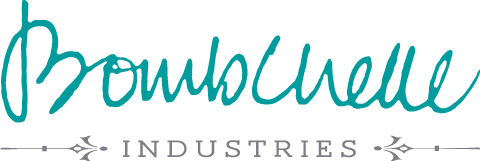
So far in the Kickstarter series, we’ve covered:
- An overview of the campaign & the results
- A deep-dive into the content, social media, and other marketing that went into the campaign
In today’s post: PR, press, & reviews – how I got them for the planner Kickstarter, and what effect they had.
Pitching journalists & bloggers
I’ve talked a lot about doing PR well in other posts, so I’ll refer you to those:
- Give good quote: how to make it easy for people to feature your business
- For the love of everything good and holy, read this before you send your next PR email
- Pitching Your SaaS to the Media
Generally, I followed the same rules that are outlined across those posts, which breaks down to:
- Only pitch people/publications that would actually be interested in covering it (for example, I didn’t pitch people who covered startups or big businesses, I focused on freelance/solopreneur focsed writers/outlets)
- Try and keep it short, while still having all pertinent information that they’d need to write a post on it
- Tie the event/campaign/product into larger events
- Be ready to reply to emails ASAP if they do have questions
After a few rounds of refinement, this is the pitch template I used for most of the campaign:
(obviously, it was modified depending on who I was pitching, but this is the version I have saved in Evernote)
I wanted to get in touch because I’m working on a project I thought you might find interesting, since you write about freelancing tips and tools on a regular basis. As you might know, 34% of the US workforce is freelancing now (http://bit.ly/1R5pvwT), and that number is only going up – but there’s a problem. Those freelancers are often fantastic at what they do, but they have some very common struggles: staying organized, making their business a priority, and planning well.
My fix for these problems, the Freelancer Planner, is currently funding on Kickstarter: http://kck.st/1LxcDfm It’s the first planner specifically designed to make freelancers more efficient and profitable.
In addition to the planner itself being set up to support better business and productivity habits, the printed version will come with a guide that walks freelancers through how to get the most from the planner, while also avoiding common problems such as overestimating client slots on a weekly basis, setting realistic income goals, etc. As someone who’s been freelancing for years, I’ve seen these problems send my friends and colleagues diving headfirst into burnout. And it’s not just my friends – these problems are probably a huge reason why a whopping 38% of full-time freelancers only made $20k or less in their last year of freelancing. (http://bit.ly/1FS6iTD)
As we move more and more towards a flexible gig-economy that relies on freelancers, it’s absolutely crucial that freelancers learn how to be good business owners as well as talented designers (or writers, and so on). It’s my hope that the Freelancer Planner can help with that.
If you have any questions, want to do an interview or want me to send over a press kit (or the digital downloadable version for you to take a look at), etc., please don’t hesitate to let me know. If you don’t have the bandwidth/interest in a story around the campaign, but want to support it, here’s a click to tweet link you can use: http://ctt.ec/jz39d
Thanks so much for your time, and have a fantastic day!
Michelle
You can see what I mean about point two, above. Honestly, this isn’t particularly short, and looking at it, I see ways I could have trimmed it down a fair bit. (You live & you learn!) But check out this post at CreativeBloq: This clever planner could solve your freelance woes
I sent a modified version of the above pitch in via their contact form. They didn’t email me for any more info. Instead, I got an email when the post went live – because my pitch had all the information needed to put together a post.
One phenomenon that I didn’t know about ahead of time is that many outlets won’t cover a Kickstarter campaign until after it’s fully funded. This is another reason you want to be funded as early as possible in the process. With this campaign, we were fully funded by end of day 7/22, with the campaign ending on 7/28:

I reached out to people who had told me to follow up when I was funded as soon as we met the goal, but six or seven days isn’t a lot of time for a news story turnaround on short notice – especially when that time stretches over a weekend (the 22nd was a Wednesday, the 28th was a Tuesday). So next time I do anything like this, the goal will be to get funded with a solid two weeks left (or more!), giving ample time for people to cover the campaign after it’s funded.
Reviews
Another route that I went, instead of just pitching people on writing about the campaign, was sending review copies to people who covered related topics. Not unsolicited, mind – I’d reach out via Twitter first and ask if they were interested in writing a review or just wanted to see it, and if they said yes, then I’d send it. Some of these people I was already engaging with; some I found via posting in Facebook groups or searching for people who tweeted about freelancing (or topics that freelancers often tweet about, like design or writing). I also openly posted on Facebook & Twitter that I’d send a review copy to anyone who wanted to write about it.
Here’s a few of the reviews or interviews that occurred as a result:
- Review of the Freelancer Planner
- Stay organized, earn more, and stress less with the freelancer planner (interview)
- [Review] The Freelancer Planner
- Excited about a planner
Product Hunt
Something I wanted to try with this Kickstarter was getting on Product Hunt. In case you haven’t heard of it, Product Hunt is like an aggregator of new/cool products and apps, with a massive audience (their In other words, getting on the front page of Product Hunt is a really big deal.
I did have two factors working against me, though:
- About a month or two before my campaign started, I talked to one of the moderators, and she told me that they were putting less crowdfunding campaigns on the front page (which I totally understand as a community move, because in tech a lot of crowdfunding often results in broken promises and out-of-scope projects)
- I read a lot about “how to launch on PH” (as this is the preferred method of getting press for a lot of people in the tech/startup/blahblah world) and something that they didn’t mention is the entire “upcoming” page & the way it works
Basically, unless you’re in a select group of users, nothing you post goes on the front page. Instead, it goes on an upcoming page, that most people don’t check. Moderators can bump something from the upcoming page to the main page, but my understanding is that that doesn’t happen very often.
At any rate, I found myself with a Product Hunt invite/postable account. I asked a friend if she knew anyone who could post it, so she introduced me to someone who did, who didn’t post it, but instead invited me…it’s like the dang mafia up in here.
I posted it (and ran its own little mini-promotion campaign, with tweets linking to Product Hunt and prompts to backers to upvote it – read more on launching/promoting on Product Hunt here), but it stayed on the upcoming page for a day or two. Despite that, it still drove backers and traffic (see below).
Results:
Like I mentioned in the social media & content marketing recap, social media was far and away the biggest driver for backers. That said…
- The Creative Bloq feature was #5 on the list of backer referrals, driving 6.43% of pledges (30 backers for a total of $575)
- Product Hunt, despite not making it to the front page, still drove 3.3% of pledges (9 backers for a total of $295)
- Other reviews and press added up to 2.57% of pledges (12 backers, $230)
Total: 12.3% (51 backers, $1,100)
Now, like I mentioned before, depending on the link shortener used, shortened links can count as direct referral traffic…or links (shortened or not) that were opened in a new browser tab. (More on direct traffic here & here.) Looking at the referrals in the bit.ly dash, 19% of the clicks came from the CreativeBloq article (so it probably created more backers than the report shows).

All told, the press/PR/review efforts drove a decent amount of backers. There’s a few things I’d have done differently, but I’ll be covering those in a post at the end of the series.
Any questions? Hit me up on Twitter or leave a comment here – stay tuned for the next post (covering the exciting world of product design, manufacturing, shipping, and other admin!) and then the lessons learned/things to do differently next time wrap-up post (with resources). And if you haven’t read them already, you might want to check out the…
Other posts in the Kickstarter series:
Behind the scenes of a successful Kickstarter: everything you wanted to know (part one)
